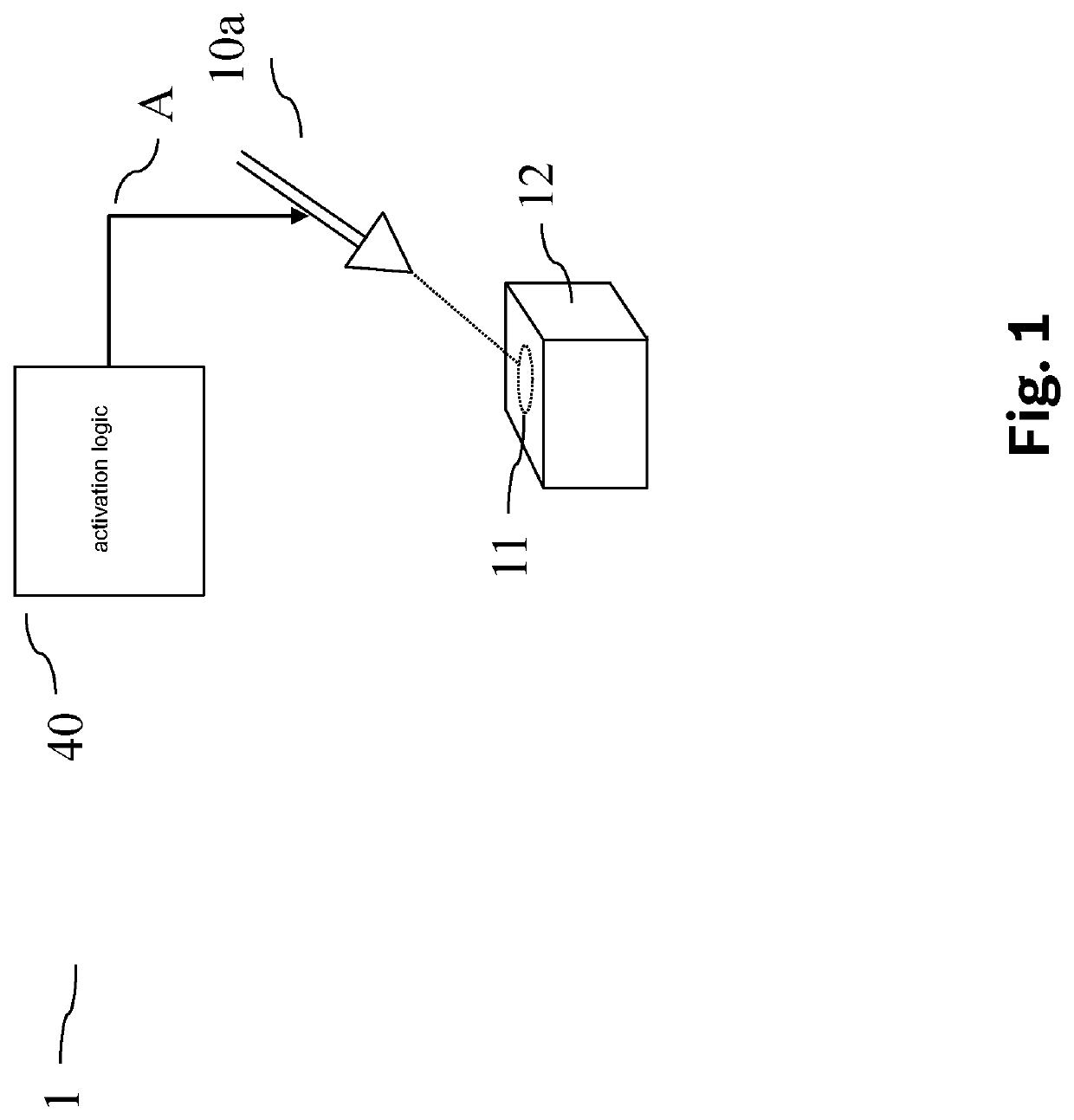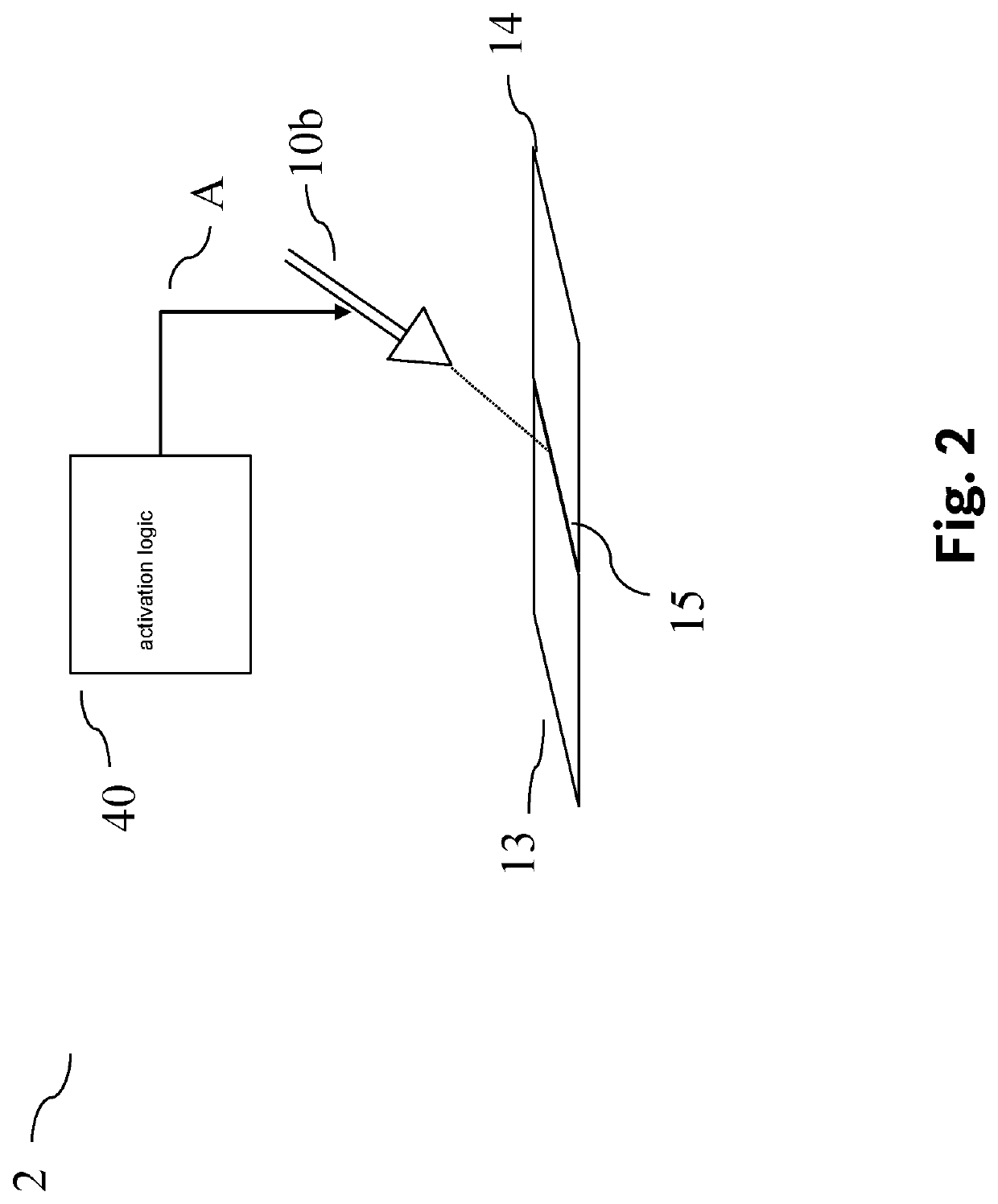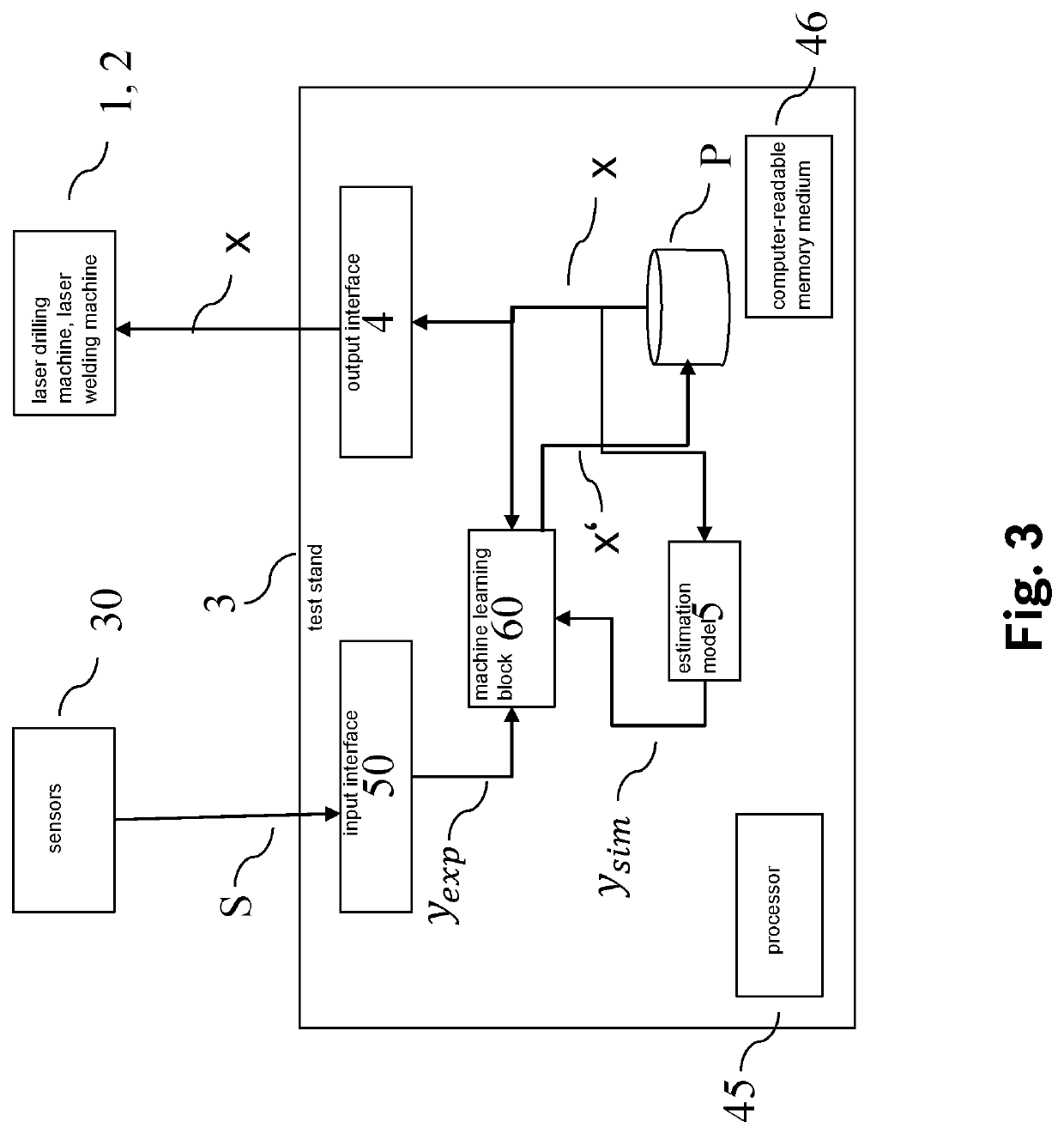Due to the very
high intensity, the absorbed laser energy results in pulsed very rapid heating of the workpiece material, which results, on very short time scales and in a spatially very localized manner, in melt formation and also partial
vaporization.
In the case of longer pulse durations and lower intensities, the drilled hole formation is clearly dominated by melt expulsion, which results in reduced precision with significantly higher productivity.
In the manufacturing method
laser drilling, the
process development is typically experimental in nature, because the numerous highly dynamic interacting physical effects presently are not able to be modeled with sufficient accuracy.
Reliable predictions of quality properties, for example, solidified melt deposits inside the drilled hole or also in the form of a burr at the drilled hole entry, damage to the drilled hole edge, or also the circularity of the drilled holes are presently not possible using these models.
Due to the very
high intensity, the absorbed laser energy results in very rapid local heating of the workpiece materials, which results in a shared melt bath formation on short time scales and in a spatially very localized manner.
The resulting metallic splashes (so-called weld spatter) may result in a reduction of the component quality and / or may require production interruptions for cleaning the laser
welding facility, which causes a significant increase of the manufacturing costs.
As in the case of
laser drilling, the
process development (
process optimization with the goal of minimizing the weld spatter) is also very experimental in nature in the case of laser
welding, because the numerous highly dynamic interacting physical effects are not able to be modeled with sufficient accuracy.
One challenge in the modeling in this case is that the workpiece characteristic data are often not known for the relevant pressures and temperatures.
However, a reliable prediction on quality properties, for example, solidified weld spatter, is not possible using these models.
Because there are many settable process parameters (which are often time-dependent and location-dependent), such as laser power, focus
diameter, focus position,
welding speed, laser beam inclination, circular path frequency, and process
shielding gas, the optimization of the process parameters is a cumbersome process which requires very many experiments.
Because, on the one hand, many workpieces or components are required for these experiments and, on the other hand, the evaluation (manufacturing of the cross sections for measuring the
weld seam geometry) is also complex, the number of the required experiments has to be reduced to a minimum.
Moreover, in practice the costs of the required production equipment are also decisive; with increasing flexibility of the variable parameters, the costs normally also rise.
Because there are many settable process parameters (e.g.,
pulse duration, focus position (time-dependent), focus size,
pulse repetition frequency, circular path
diameter (time-dependent), circular path frequency, incidence angle (time-dependent), drilling duration,
pulse energy (time-dependent),
wavelength, process gas type and pressure), which often also may be varied in a time-
dependent manner, the optimization of the process parameters is a cumbersome process which requires very many experiments.
Because, on the one hand, many workpieces or components are required for these experiments and, on the other hand, the evaluation (in particular of the inner drilled hole shape) is also complex, the number of the required experiments has to be reduced to a minimum.
Because there are many settable process parameters (which are often dependent on time and location), such as laser power, focus
diameter, focus position, welding speed, laser beam inclination, circular path frequency, and process
shielding gas, the optimization of the process parameters is also a cumbersome process which requires very many experiments in the case of laser welding.
Because, on the one hand, many workpieces or components are required for these experiments and, on the other hand, the evaluation (manufacturing of cross sections for measuring the
weld seam geometry) is also complex, it is desirable for the number of the required experiments to be reduced to a minimum.
Because the experiments are very complex, this
noise normally may not be suppressed by numerous repetitions with the same input parameter set using subsequent averaging of the results.
It is unimportant with which uncertainty the models depict the process and how many of the quality criteria they describe.
In general, however, the prediction accuracy of the process models is limited.
In general, process models therefore may not replace physical experiments completely, but only partially.
 Login to View More
Login to View More  Login to View More
Login to View More 


